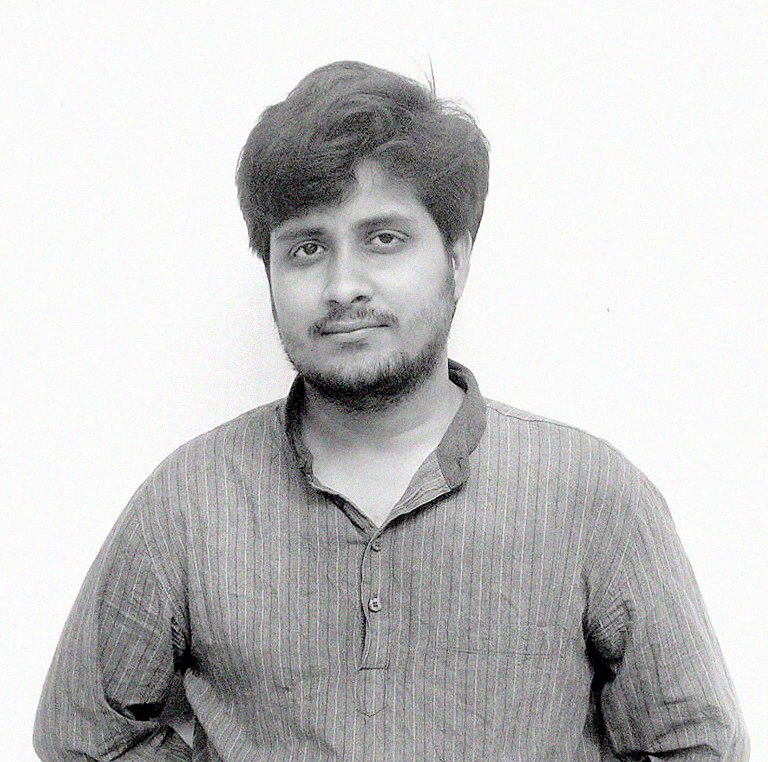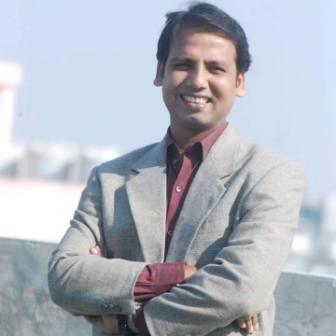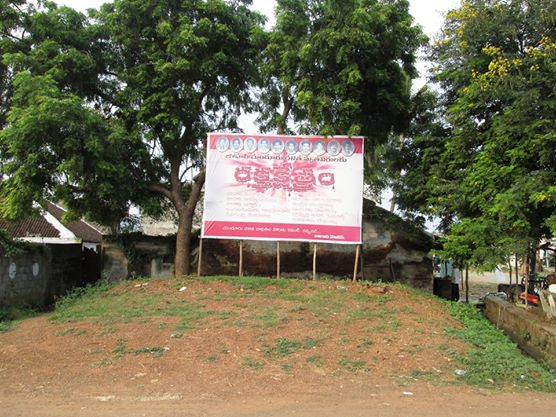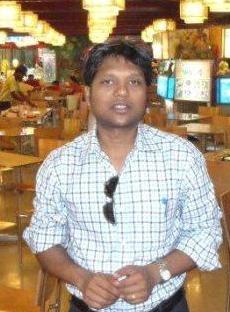Pinak Banik
 (This is a three part essay dissecting the much celebrated ‘idea of india’ from an anti-caste perspective, attempting to lay bare the machinations of the Brahminical knowledge producers)
(This is a three part essay dissecting the much celebrated ‘idea of india’ from an anti-caste perspective, attempting to lay bare the machinations of the Brahminical knowledge producers)
Many of us have recently come across a haphazard, yet systematic procession of essays, articles, reports, lectures, coverage, debates broadcast on electronic and print media, all of which tend to say that the idea of India – secular, socialist, tolerant, progressive, inquisitive etc., is in danger and must be saved at any cost. Some of the headlines in this context read as:
• “We need to save the idea of India: Nayantara Sahgal” (http://www.thehindu.com/)
• “Building the Idea of India | Irfan Habib” (http://awaam.net/)
• “Which India Will Endure, Tagore’s or Golwalkar’s?” (http://www.thecitizen.in/)
• “What The Biryani Says About ‘The Idea Of India'” (http://www.huffingtonpost.in/)
• “Let us stand for what “Idea of India” means (http://blogs.timesofindia.indiatimes.com/)
• “Dear India, don’t be like us please: a friend from Pakistan”(http://www.catchnews.com/)
In response (from the instigators of such claims) we see a series of another set of haphazard but systematic acts of returning awards, resignations from state institutions, protests on streets and social media, shutting down of educational institutions, public meat-eating (beef) parties, talk shows, seminars, open letters, new t-shirts with secular messages, Bollywood figures becoming socially concerned etc. So, undoubtedly a lot of revolution is in the air.
This “growing” chorus of protests is explained based on a stated observation that there seems to be a tendency of “growing” intolerance in the recent past and it has intensified after the BJP government has taken charge. That, the Narendra Modi led BJP Govt. under the directions of the RSS, is ‘attacking the secular and socialist values of India, distorting and saffronising the emancipatory Indian history, obstructing India’s thirst for progressive sociological, cultural and scientific explorations and enquiries, vandalizing India’s great humanist traditions, reducing India’s democratic ethics into fascist instruments.’ They lament that RSS through BJP, is trying to manipulate and rewrite India’s history to maintain a narrative to justify their communal propaganda, and locate RSS in a favourable position in the history of freedom struggle, by appropriating and disqualifying the original heroes.
All that would lead us to believe that India had a secular and tolerant past, an undistorted clean written history, extraordinary contributions in social, cultural and scientific discourses, a great legacy of humanist traditions, democratic values embedded within the society. It also suggests that Indian history is not communal and the leaders of the freedom struggle, who are accommodated as champions of the Idea of India, are real luminaries and their legacies are now getting butchered.
This “growing” troupe of protesters who gave this call for saving the “Idea of India”, from all these above mentioned occurrences, includes an exquisite list of India’s “freethinking” public intellectuals, social scientists, historians, writers, academicians, poets, artists, scholars, filmmakers, actors, performers, musicians and several political parties (including the Congress party and the Left).
On the other hand, we have the other group of intellectuals, bureaucrats, actors, filmmakers, scholars, writers, artists, politicians, saints, token moulavis etc., who are not “freethinkers” as such but mere puppets of the Modi Govt. and are often seen uttering conflicting, idiotic, absurd things. First they ask why there was no award returning and resignation after the emergency, during the 1984 Sikh massacre (other events of intolerance)? But they don’t dare to utter a single word about the 1992 Babri demolition and the carnage that followed or the 2002 Gujarat genocide. Then they also say that these protests are politically motivated and meant to defame the image of the Govt. and the “Idea of India”. Anyone, who fights for a certain ‘idea of India’, is a traitor and anti-national (the idea of the Indian nation becomes contradictory). They also organized a counter March for India. Finally, they concluded by saying, India was never intolerant, and nobody has the right to call India intolerant.
It is clear that the first set of protesters have unhesitating confidence in and about the “Idea of India” than the latter. Though the first set of protesters are threatened, abused (even silenced) by the pro RSS groups (“fringe” elements of Hinduism), they claim to have less support (!) to organize spectacular protests, yet are seen to be standing staunchly in their positions. In contrast, the latter group knows that they have to make up claims of tolerance, enforce confusing facts (even fiction) and contradictory statements to deal with the dominant “Idea of India” narrative and defend themselves from the attacks of “freethinkers” and launch counter attacks. They know that they can’t place sufficient logic to secure their position and there is certainly a climate of intolerance, as always. They seem to be on a fragile foothold though under the patronization of the Govt. and RSS, with no limits on support, security, weapons, money and media! But still the freethinkers are hijacking all the footage. That’s how robust the freethinkers’ claims are, so powerful is this idea of India!
Let’s understand the deeper connotations of the “Idea of India”. Earlier this month, I was reading a transcription of Prof. Irfan Habib’s lecture called “Building the Idea of India” (http://awaam.net/building-the-idea-of-india-irfan-habib/), which was delivered at Kennedy Auditorium, Aligarh Muslim University, Aligarh on October 07, 2015.
As all of us know that Prof Habib is one of the most renowned and celebrated Indian historians. He follows the approach of Marxist historiography and critical appreciation of history (thus ‘secular, unprejudiced’). He was earlier a Professor at AMU, and is presently appointed as Professor Emeritus at the Department of History of the AMU. He was Chairman of the Indian Council of Historical Research during 1986–90. He was the general secretary, Sectional President, and then the General President of the Indian History Congress (1981). He is a Corresponding Fellow of the British Royal Historical Society since 1997. He had directed a group of historians at the Indian History Congress of 1998 who moved a resolution against the “saffronisation” of history (source Wikipedia). Recently Prof. Habib came under attack for comparing RSS (Hindu fringe element) with ISIS (Muslim fringe element). Prof Habib is threatened and abused by the Hindu fringe elements, standing for the Idea of India.
The reason to provide Prof Habib’s achievements and effectuations is to become sure of the fact that he is the right person for us to understand the “Idea of India” from. I will quote some excerpts from his lecture, through which I hope to comprehend the historical process of “Building the Idea of India”, and to understand the true nature of the Indian state and it’s characteristics.
Prof Habib starts with the recent incidents of assassination of rationalists, killing of Mohammad Akhlaq, in the name of Gau Raksha (cow protection), and argues how these are against what this country stands for. He tries to establish how there is a rising climate of intolerance, which is against the Idea of Indian nation. He continues by saying that RSS mentors are falsely claiming that India was a nation since Rig Vedas for the Vedas and Brahmanas have no mention of it. He goes on articulating the history of the nomenclature of the land, referring to Dharma Sutras, Manusmritis, Vedas, inscriptions and other foreign texts on India, without entering into details of what these systems of Dharma Sutras, Manusmritis, and Vedas stand for. He discards Perry Anderson’s assertion that “India” is a name given by foreigners particularly Europeans in modern times, as a totally misleading statement, and argues there was a “conception of India in ancient times, even before Christ, but when was there a conception of love for India i.e. patriotism?”
Prof. presents his findings thus:
“The first patriotic poem in which India is praised, India is loved, Indians are acclaimed is Amir Khusrau’s long poem in his Nuh Sipihir written in 1318. I am very sorry that now we are losing this heritage. How many people here would be able to read Amir Khusrau, and so appreciate that here is the praise for India for the first time in its history. What does Amir Khusrau praise India for? For its climate first of all which I think is very unconvincing statement, its natural beauty, its animals and along with its animals its women, their beauty as well as faithfulness. Then he comes to Brahmans. He praises their learning. He praises their language Sanskrit. He identifies India not only with Brahmans, but also with Muslims. Those who speak Persian, as well as those who speak Turkish, he says, are to be found throughout India. He praises all the languages of India from Kashmiri to Mabari i.e. Tamil. All these languages that were spoken in India, not only north India but also in the south India, are listed there. He called them Hindavi.”
Amir Khusrau wrote poetry in Persian as well as what he called “Hindavi”, a combination of local Khariboli (vernacular language spoken by ordinary people around Delhi), Awadhi and Persian, which later evolved into Hindi and Urdu. From where do south Indian languages (Tamil) enter Hindavi? How does then “Nuh Sipihir” become a “patriotic poem” when there was no concept of a nation at all? Why don’t you just say the poetry celebrates Amir Khusrau’s experiences with different regions, which he had visited for the sake of recording victorious narratives for the Kings he worked for, particularly concentrating on various beauties of the land of Awadh? And these medieval historical chronicles were not the works of sociologists or ethnographers, and their purpose was to compose eulogies, report on historical events and document the achievements of emperors.
The time Khusrau lived in saw wars, invasions, destructions, killings, murders for power in the political landscape (by Mongols, Alauddin Khilji, Rajput king Rana Hammir, Khusrau Khan, Ghiyath al-Din Tughluq etc.) and being a court poet and historian of the Delhi Sultanate, Khusrau was witness to many of them. Khusrau gives an account of Alauddin Khilji’s maliknaib, Kafur Hizar Dinari’s invasion of Mabar, in November 1310, which was an event from the initial stages of Khilji’s campaign to expand the Sultanate to South.
“At every corner conquest opened a door to them…in all that devastated land wherever treasure remained hidden in the earth it was shifted, searched through, and carted away so that nothing remains to the infidels (gabran) of their gold but an echo and of their gems, a flaming fire. When all that incalculable weight of gold and priceless gems was surrendered to his majesty’s trusted agents, the victorious army, weighted down by immeasurable treasure, taking mighty elephants, returned swiftly to the court.”
How can one find a peaceful tolerant past in a sociological understanding such as this one, which Prof Habib claims that we are losing now? What heritage is he talking about? What are you trying to hide under the mysticism of Hindu-Muslim brotherhood, Prof? Why don’t you expose the sociological and political nature of that time? Why Muslim Kings were loved by the majority of their Hindu subjects and which caste these Hindus belonged to? Why Brahmans were exempted from the jizya tax during the Sultanate until Firoz Shah Tughlaq imposed it in 1350s?
Wasn’t there some compromise between Brahmanism and the Sultanate? Wasn’t there a practicing caste system among the South Asian Muslims? Prof Habib keeps no space to have these questions answered by insisting on a romanticized secularism through placing “Nuh Sipihir” to do the job of social science.
And how can one not be critical about the admiration for Sanskrit and Tamil at the same time, projected in a unifying sense? Wasn’t there hostility between the speakers of these two languages? Weren’t these two languages also about distinctions of caste?
Khusrau praised Brahmans and their learning, their language Sanskrit. But why only the Brahmans were so learned and intelligent? Why were the majority of the people from the other spectrum so illiterate, ‘unintelligent’ and backward? Why were they prevented to utter a single word of Sanskrit and Vedas, not even allowed to hear them? Haven’t you read about Dharmasastras, Manusmritis that had fixed retributions, penalties and punishments (dandas) for the Shudras for violation of the codes and conducts of their prescribed duty/dharma (operational during Khusrau’s time)?
“The ears of him (Shudra’s) who hears the Veda are to be filled with (molten) lead and lac”, “His (Shudra’s) tongue is to be slit if he pronounces it (Vedas); his body is to be cut through if he preserves it.”– Thus instructed Manusmriti.
Though there were conflicts, antagonism over power and supremacy, none of the Sultans of Delhi had challenged or disturbed the course of Manu’s Laws during their rule. Why don’t these questions ever appear in your mind while projecting Khusrau as a brand for religious tolerance, secularism and brotherhood?
Why don’t you mention early Dalit poets, writers like Madara Chennaiah, Chokhamela, Soyarabai, Dohara Kakkaiah who lived almost around Khusrau’s time? These poets and writers, who made their livelihood as cobblers, agricultural labourers, corpse movers etc., had managed to articulate their dissent through literature, though being deprived of any source of education. You don’t include them in your Idea of India, because they had not written any patriotic poem praising India, but had shown the real face of ugly social divisions. So their accounts have no place in your narrative and you don’t see a problem there. You might know, your Idea of India’s readymade enemy, Swayamsevak PM Modi has presented a specially commissioned reproduction of Amir Khusrau’s Poetry “Khamsa-i-Khusrau” to the Uzbek President earlier this year to sell India’s hoax secular story to the world, just like you did.
Prof Habib finds the same secularism, tolerance and egalitarianism prevailing in the Mughal period too. Citing from Dr. Tara Chand’s book “The Influence of Islam on Indian Culture”, he goes on to say, “that these two successively large states, the Delhi Sultanate and the Mughal Empire, by bringing all parts of India together created the sense of a larger “national allegiance”, an assertion he continues to make, even in the official history of Indian National Movement which he partly wrote and partly edited. This concept of political India is also very strongly present in the revolt of 1857″. Prof. sees a sense of “national allegiance” in bringing states together through invasions!
Prof Habib then steps into modern history, saying,
“Those of you who know or who have studied Modern India probably know that the rebellion of 1857 occurred with the revolt of the Bengal Army. A hundred thousand men out of 130 thousand, one of the largest armies in the world at the time, revolted and they were in majority Brahman sepoys. But what did they say? ‘Let us go to Delhi and crown Bahadur Shah Zafar, emperor of India’. Those of you who know Urdu, I invite them to read the Delhi Urdu Akhbar, the major organ of rebels in Delhi. For five months, it was the major organ through which the rebels spoke and it is of ‘Hindustan’ that they speak. They quote Sa’di who said that all human beings must be one—Ayza-e-Yak-Digar and—”they are organs of each other”; if one is hurt the other is hurt. So Hindus and Muslims, the rebels proclaimed, must come together.”
Prof Habib, isn’t it true, that protests on various issues like rising presence of Christian missionaries, rumours of conversion to Christianity, against policies of compulsory services overseas without “foreign service” remuneration etc., from the dominant higher castes in the Bengal Army, had caused the initial mutinies which led to the rebellion?
“In 1772, when Warren Hastings was appointed India’s first Governor-General, one of his first undertakings was the rapid expansion of the Company’s army. Since the sepoys from Bengal – many of whom had fought against the Company in the Battles of Plassey and Buxar – were now suspect in British eyes, Hastings recruited farther west from the high-caste rural Rajputs and Brahmins of Awadh and Bihar, a practice that continued for the next 75 years. However, in order to forestall any social friction, the Company also took pains to adapt its military practices to the requirements of their religious rituals. Consequently, these soldiers dined in separate facilities; in addition, overseas service, considered polluting to their caste, was not required of them, and the army soon came officially to recognize Hindu festivals. This encouragement of high caste ritual status, however, left the government vulnerable to protest, even mutiny, whenever the Sepoys detected infringement of their prerogatives.” – (Metcalf, Barbara D.; Metcalf, Thomas R: A Concise History of Modern India (2nd ed.), Cambridge University Press, p. 337, ISBN 0-521-68225-8)
Prof Habib, you talk about the secularism of Brahman and Rajput soldiers, without uttering a single word on the caste practiced by those same secular and tolerant Brahmin-Rajput soldiers. Incidentally, crowning Bahadur Shah Zafar is a far different story than what you try to establish. Bahadur Shah Zafar had no choice but to support the rebellion, as the Sepoy regiments had seized the city of Delhi. They started rioting and killed 52 Europeans, who were either prisoners or hiding in the city. Zafar never supported these executions, which took place under a peepul tree in front of the palace. The sepoys also rejected the commands from Bahadur Shah Zafar’s eldest surviving son, Mirza Mughal, whom the emperor had appointed as commander in chief of his forces, “…each regiment refused to accept orders from someone other than their own officers (predominantly upper castes)“-(Dalrymple, The Last Mughal). And who doesn’t know conflict and agitation around the tallow, lard-greased (beef and pork) cartridges and Pattern 1853 Enfield rifles before the rebellion started. As one Company official pointed- “unless it be proven that the grease employed in these cartridges is not of a nature to offend or interfere with the prejudices of caste, it will be expedient not to issue them for test to Native corps”– (Kim A. Wagner: The great fear of 1857: rumours, conspiracies and the making of the Indian Mutiny.)
Some heights of secularism and tolerance, these! And you compare this as an event of Hindus and Muslims voluntarily becoming “organs of each other”! Without this fabricated narrative your Idea of India’s entry in modern times falls apart.
And as always, you don’t include the momentous account of those approx. five hundred untouchable soldiers of the Mahar Regiment of the British Army, who fought against the Peshwa Army (over 25,000) and brought an end to the tyrannical brutal Peshwa rule in the battle of Bhima Koregaon, on 1st January 1818. For you this is not an achievement that can be included to the Idea of India, because this is the defeat of an Indian (Brahmin) kingdom, a victory of untouchables over Brahmanism.
Please read Part II of this paper here.
~~~
Pinak Banik is a visual artist and independent researcher from West Bengal. His areas of interest are Socio cultural Historiography, Political economy, Anthropology, Art and Society. He can be reached at imrealartist@gmail.com.










